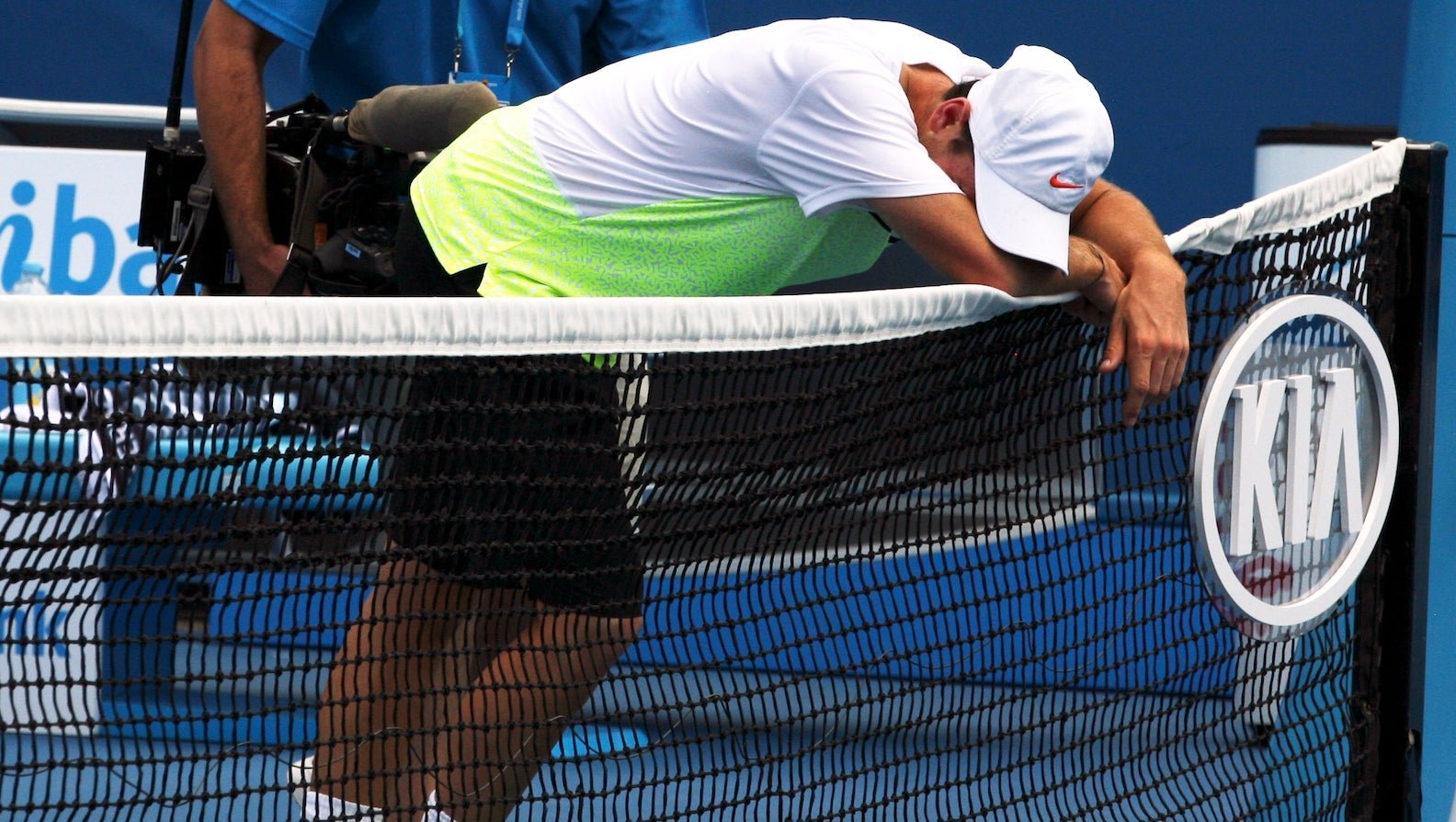A glimpse of what it will be like to play sports in a hotter world
When Roger Federer played at the US Open this week, his tennis match took place in temperatures that exceeded 30°C (86°F). He lost—the first time the 37-year-old has been beaten by a player ranked outside of the top 50 at the event. “You just keep on sweating more and more and more and more as the match goes on,” Federer said. “You lose energy as it goes by. At some point, also, I was just happy that the match was over, I guess.”


When Roger Federer played at the US Open this week, his tennis match took place in temperatures that exceeded 30°C (86°F). He lost—the first time the 37-year-old has been beaten by a player ranked outside of the top 50 at the event. “You just keep on sweating more and more and more and more as the match goes on,” Federer said. “You lose energy as it goes by. At some point, also, I was just happy that the match was over, I guess.”
Federer wasn’t the only one affected at the tournament in New York. Quarter-final loser John Isner told reporters he went through 11 shirts and dropped as much as 10 lb (4 kg) simply by sweating throughout. Organizers also suspended the junior matches on the outside courts.
It’s something that all athletes are going to have to get used to. As climate change kicks in, the world is also seeing more freak weather. That means more unusually hot days more often. In the past few months, heatwaves have killed 50 in Canada, 80 in Japan, and more than 80 in Greece.
Sports will have to completely rethink how they are played in a world that’s getting warmer every year. For those with annual tournaments, as in tennis, this is a slow burn. Each one is a reminder that the venues and rules are not designed for hotter weather. For example, there remains only one “heat rule” in the game of tennis, which allows a 10-minute break “between the second and third set when the heat stress index is at or above 30.1°C” only in the women’s singles game and only when requested by one of the two players. The men aren’t officially allowed a break.
This rule was broken, with men getting a break for the first time ever, at this US Open. It will probably have to be broken a few times more.
In 1981, when Federer was born, there were eight days that exceeded 32°C every year in New York. There are now 11 days, according to an interactive by the New York Times (paywall). There could be 80 days a year like that by 2061. Earlier this summer in the northern hemisphere, many of the same tennis players faced the warmest Wimbledon in its 141-year history as England went through the hottest summer on record.
A quadrennial tournament, like the World Cup in soccer, allows us to see more how much sport will have to adapt.
In 2014, at the World Cup in Brazil, FIFA was sued by the players’ union over the kick-off times for matches starting at 1pm local time. FIFA, the game’s governing body, says it makes its decisions about starting times using historical data (and not, of course, the best time for TV viewers around the world). So places such as Manaus and Fortaleza with the highest historical average temperatures did not have any matches that started around midday, even as the tournament was played during Brazil’s winter in the southern hemisphere.
The problem with using historical data will be less useful as the world’s weather gets weirder. Qatar, which is hosting the next World Cup in 2022, had 194 days above 32°C back in 1960, the furthest back the New York Times data goes. It now has 212 of those extremely hot days. Qatar won the highly questionable bidding process by suggesting it could keep athletes alive with pioneering stadium cooling technology. That has now been abandoned for moving the tournament to November for the first time in history. What future measures will FIFA have to take to keep the game playable all year around?
In Tokyo—site of the next Olympics in 2020—following a summer that reached a scorching 41.1°C (106°F) at one point, organizers are already talking about spraying the roads with a heat-blocking nano-mist to allow the iconic marathon to take place.
Lest we think this a mere half-measure, it is worth remembering that this event takes its inspiration from the apocryphal story of Philippides, who supposedly ran without a break from Marathon to Athens to announce the defeat of the Persians in the heat of summer in 490 BC and is said to have shouted “We have won!” on arrival. He then dropped dead.